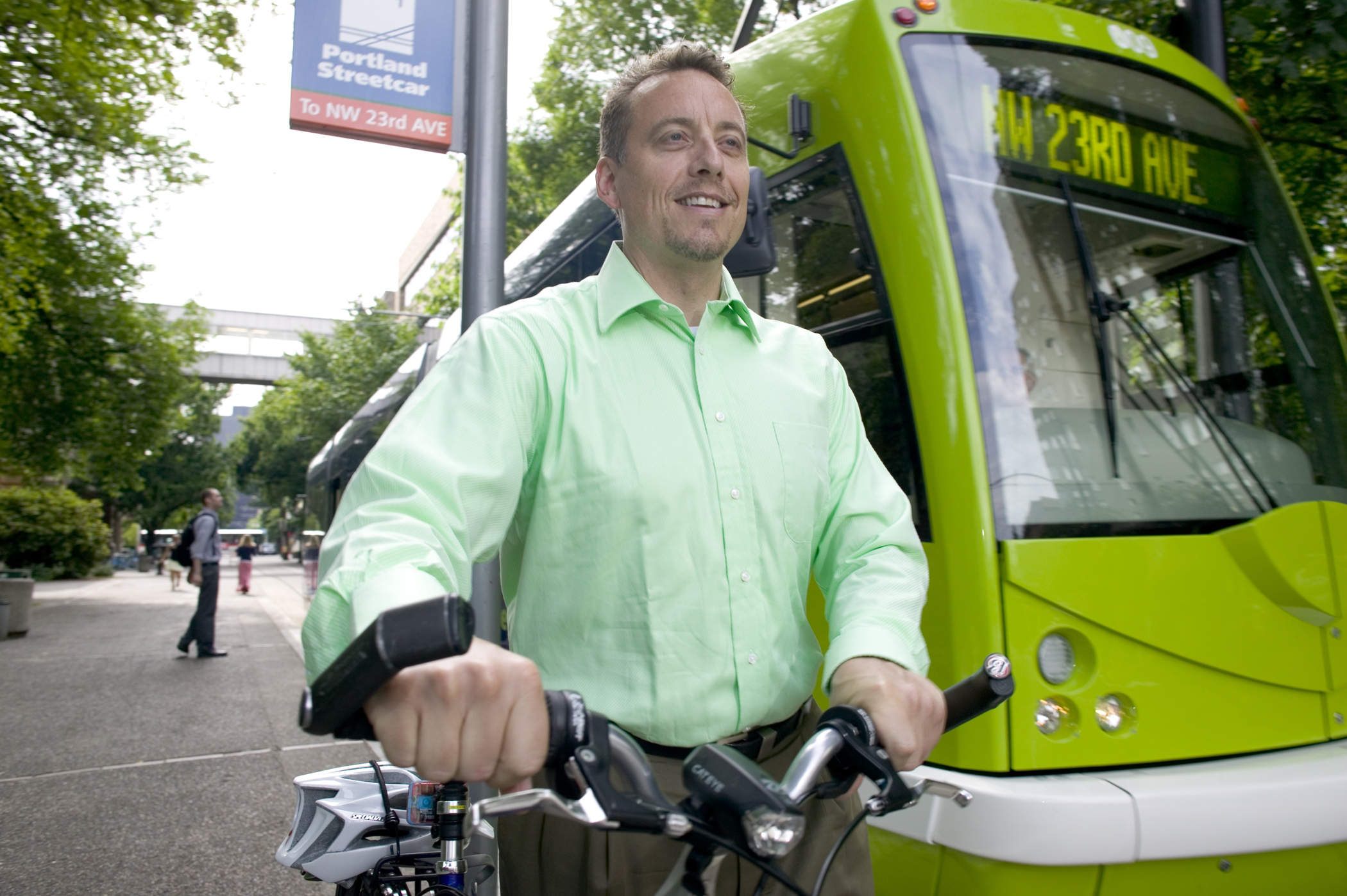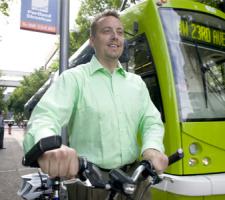
Robert Bertini, deputy administrator of the USDOT's Research and Innovative Technology Administration, discusses the research and deployment paths of cooperative road infrastructures
High-level analysis by the US'sIn the July-August 2010 edition of
Brubaker is far from alone in his thinking; EN-V is witness to that and, as Paul Laurenza observes on pp.NA9-11 of this edition, the question of how and which autonomous in-vehicle systems can be used to reduce the overall need for cooperative infrastructure systems remains unanswered. Within the automotive industry, there are those who challenge the implementation of 5.9GHz DSRC over cellular technology. They argue that mandating 5.9GHz will in fact delay deployment of intelligent infrastructure. In the wider transportation sector, some go as far to declare that mandating 5.9GHz actively stymies development of other technologies and risks seriously compromising ITS's future growth.
Old-school attitudes?
IntelliDrive, the USDOT's cooperative infrastructure programme, is predicated on the use of 5.9GHz DSRC to provide the sub-second latency performance needed to ensure (for instance) collision avoidance at intersections. A distinguishing feature over its forebear, the Vehicle-Infrastructure Integration (VII) programme, is that it also talks about the use of an 'open platform' to support non safety-critical 'comfort' or mobility applications. Nevertheless, there remains a classic chicken-and-egg situation which arises out of a combination of the debate over the technology and of the continuing search for a business case which supports IntelliDrive in the longer term.IntelliDrive's acknowledgement of the need to allow non-safety applications to be delivered by means other than DSRC recognises that the original premise of VII, a fully instrumented national road system along which runs a fully instrumented vehicle fleet, could never be achieved overnight. International studies have been conducted which have ascertained the minimum proportion of equipped vehicles needed to achieve meaningful safety, congestion-reduction and environmental benefits; that figure is somewhere around 10 per cent. RITA has also acknowledged that V2V applications could be fielded independent of infrastructural deployments. Earlier this year it produced a White Paper, Achieving the vision: from VII to IntelliDrive, which highlights the potential deployment paths, whether V2I/I2V/V2V or V2V-only. So does the NHTSA decision to aggressively pursue V2V serve as something of a watershed? And does IntelliDrive's less-entrenched position, in the light of all that is going on around it, go far enough? Robert Bertini, RITA's current deputy administrator, says the broader answer to those questions lies in understanding more fully his organisation's, and by extension IntelliDrive's, role.
Infrastructural evolution
Back in the days of VII, the vision was of a heavy infrastructure focus. RITA's White Paper expects that there will still be an infrastructure element but it won't take every intersection being instrumented before benefits will be realised, Bertini states.
"V2V isn't reliant on infrastructure upgrades. But the upgrading of intersections isn't as onerous as it might seem. If you've already got infrastructure there, you've already got a power supply and it's often getting power in that's the most costly element. Yes, compared to a few years ago we're probably seeing a reduced overall infrastructure need. And yes, we're looking at how to derive benefits without necessarily having to upgrade. But we need signals infrastructure that's in a good state of repair and in any case we'll see it evolve and improve to take account of such things as transit/emergency vehicle prioritisation and adaptive signal control. Again, what we're looking at is how all these things can go on in parallel."
Defining role
"You have to remember that this is a collaborative research project with many stakeholders to consider," he says. "In addition to NHTSA, we have other governmental organisations such as the FHWA [
"That's a lot of different constituencies and while they're all working towards a common goal in the wider sense, each is also going to be focused on areas that are of most interest to them. So some, such as the OEMs, are going to be more interested in V2V while others, such as the public agencies, are going to focus more on V2I. The important thing to note is that RITA's current five-year research plan sees work on V2I and V2V continuing on in parallel.
"Part of RITA's role is to make sure that there are harmonious interrelationships within a very much wider programme. Part of where we are arises from how IntelliDrive is organised. For instance, NHTSA is the 'light vehicle partner' so the programme's V2V element is largely staffed by NHTSA."
At the higher level, therefore, RITA is trying to make it very clear that while NHTSA's 2013 regulatory decision on the regulation of in-vehicle technologies is a very important milestone it is not the only thing going on. The 2013 decision is a great motivator but international standards harmonisation, for example, is another major influencing factor.
Fuzzy logic
Where VII effectively froze out the aftermarket sector, IntelliDrive embraces it rather more fully. In part this is a reaction to the very rapid developments which have taken place in aftermarket and nomadic devices and the burgeoning market for both hardware and applications which has resulted. It also recognises that in a bandwidth-hungry world distinctions have to be made between applications' relative importance and their means of delivery. Safety remains the prime concern and such applications need sub-second latencies and (at present) DSRC. Comfort and mobility applications are rather less time-sensitive and so can be delivered by cellular or any one of a number of other technologies.IntelliDrive envisages the use of an 'open platform' for the delivery of non-safety applications. That, though, is a rather woolly term. Standardisation on 5.9GHz DSRC at least guarantees national interoperability but what of the rest? "There's a big role for the aftermarket and we've identified the development of standards for communication as a platform for innovation," says Bertini. "The USDOT is just one 'ingredient'; there are other, entrepreneurial organisations out there in both the public and private sectors.
"We have to recognise that standards development is in many ways more of an art than a science and the more organisations we have on board the better, as it'll see products getting to market more readily.
"The open platform encompasses non-DSRC mobility apps and we need input from as many players as possible to ensure their delivery in a way which does not increase driver distraction."
There is no commitment to any one standard at present because there are multiple, parallel development efforts going on, he says, and a black-and-white choice is difficult as a result.
More specifically, RITA is focusing on three specific applications for harmonisation with Europe. These are forward collision avoidance, stop sign/signal violation warning and a sustainability app which will support eco-driving and other green issues.
"We're all in this together, that's the key message," Bertini continues. "We all want the improvements these technologies will provide. But as well as being focused on all vehicles, road users and goods movement, we remain very much focused on both V2V and V2I.
"Next year's safety pilot will include field demonstrations with both aftermarket and embedded devices. We want to see what, if any, differences there are and what timelines are involved in bringing both types of technology to fruition. The vehicle manufacturers might want to control the data in their products but the truth is that people increasingly hold a lot of power in their own hands. The big question is, how does that translate into safety applications?" People will adopt technology if they see its value to their lives. Electronic tolling is an example of that. Part of RITA's plan, therefore, is outreach - documenting the benefits and then educating people.
"We don't assume that people will all adopt at the same time," Bertini continues, "but it's important to remember that even late adopters will already have benefitted from these technologies long before they themselves start using them."
Future dynamics
Looking forward, Bertini says he is optimistic but expresses a desire to see more stakeholders at the table."Development of the ITS programme is by nature collaborative. If you asked me to predict, I'd say we'll definitely see more people taking part in making our roads safer, more efficient and cleaner - we've seen a lot more interest from the international community even in the last few months. I'd like to see more innovation from outside USDOT - and I'm talking about from around the world, not just the US. In a few years' time, we'll have answers from the research we're doing now and I'd like to think in the longer term that we'll have fully addressed the safety issue.
"I'd like to see more engagement from public safety and law enforcement stakeholders, and I think the transportation industry has to go more than halfway to meet these people.
"Privacy remains a societal question bigger than just ITS but I think if we can do a better job of explaining the benefits then we'll go a long way to addressing those concerns.
"We also need to look to integrate responses to incidents and criminal activity - that's something I'm thinking about more and more.
"Finally, we need to progress links with electric and alternatively powered vehicles. The work to do this in Europe and the Far East is much more advanced and it's an arena where the US has to make progress."












